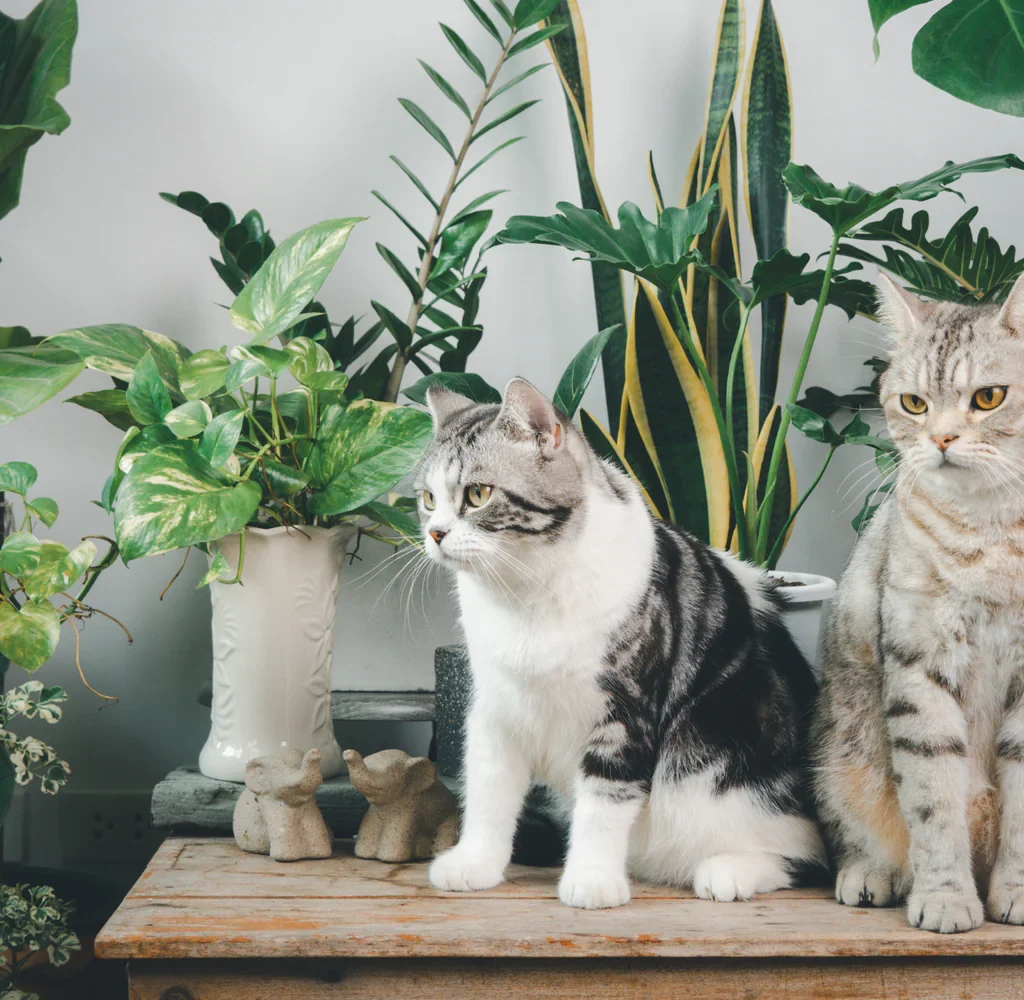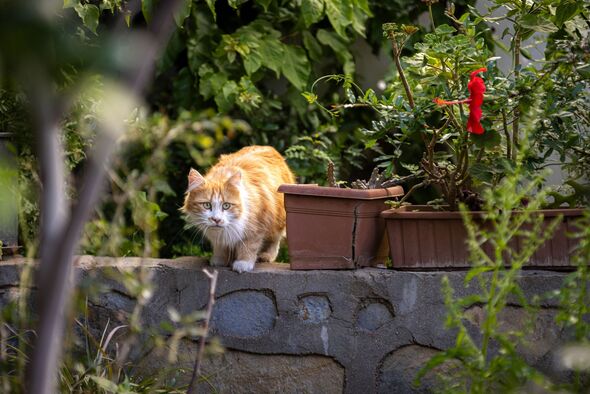If you’re both a plant lover and a cat parent, you already know the struggle. You spend time nurturing your beautiful indoor jungle or outdoor garden, only to find mischievous paws digging in the soil, munching on leaves, or knocking over your favorite potted plants. It’s a classic battle: plant parent vs. curious kitty.
The good news? You don’t have to choose between your leafy greens and your feline friends. With a little strategy and a few clever tricks, you can protect your greenery while keeping your cat happy and safe.
In this comprehensive guide, we’ll explore how to keep cats out of plants — both indoors and outdoors — using safe, effective, and humane methods. Let’s get started!

Why Do Cats Love Plants?
Before you tackle the problem, it’s helpful to understand why your cat is so interested in your plants in the first place:
- Curiosity — Cats are naturally inquisitive and love to explore new textures and scents.
- Boredom — A bored cat might dig or chew on plants for entertainment.
- Nutritional needs — Some cats chew on greenery for fiber or to help with digestion.
- Comfortable soil — Soft, cool potting soil makes an appealing litter substitute.
- Playfulness — Dangling leaves and stems can trigger your cat’s hunting instincts.
Identifying the motivation behind your cat’s plant obsession can help you choose the most effective deterrent.

Are Plants Dangerous to Cats?
Yes — and this is important. Many common houseplants and garden plants are toxic to cats, including:
- Lilies
- Pothos
- Aloe vera
- Dieffenbachia
- Philodendron
- Sago palm
- Azaleas
If you have a plant-happy cat, make sure to research each plant before bringing it home. Better yet, stock up on pet-safe greenery like spider plants, cat grass, or Boston ferns.

How to Keep Cats Out of Indoor Plants
Let’s dive into simple, humane strategies to protect your houseplants:
Create Physical Barriers
If your cat can’t reach the plant, they can’t damage it.
- Place plants on high shelves or hanging planters.
- Use macramé plant hangers, wall-mounted shelves, or tall plant stands.
- For large floor plants, consider a decorative plant cage or mesh screen.
Use Repellent Scents
Cats are famously picky about smells. You can safely deter them with natural scents they dislike:
- Citrus peels (orange, lemon, lime) — place them on the soil surface.
- Essential oils (diluted lemon, lavender, eucalyptus) — spray around the plant, not directly on leaves.
- Cinnamon sticks or peppermint oil around pots can also work wonders.
Important: Avoid strong essential oil use if your cat has respiratory issues.
Add Uncomfortable Textures
Cats dislike walking on certain surfaces. Make the soil less inviting:
- Cover the soil with pinecones, stones, or decorative pebbles.
- Use aluminum foil or double-sided tape around the plant base.
- Try a plastic carpet runner (spiky side up) near the plant.
Provide Alternative Entertainment
If boredom is the issue, give your cat something better to do:
- Set up a window perch or cat tree nearby.
- Rotate interactive toys and playtime to burn off energy.
- Grow cat grass (wheatgrass, barley) as a safe plant your kitty can nibble.
Use Motion-Activated Deterrents
Devices like motion-sensing air sprayers or ultrasonic deterrents can startle cats gently, teaching them to avoid specific areas over time.

How to Keep Cats Out of Outdoor Plants and Gardens
If your feline (or the neighbor’s cat) is turning your garden into their playground, try these techniques:
Citrus and Natural Repellents
Scatter citrus peels, coffee grounds, or sprinkle cayenne pepper around your flower beds. Cats generally dislike these scents and textures.
Garden Barriers and Netting
- Install low chicken wire fencing or garden mesh around sensitive areas.
- Place bird netting or lattice horizontally over soil to block digging while allowing plant growth.
Prickly Deterrents
Cats avoid uncomfortable textures. Spread pinecones, rough stones, or holly cuttings around plants.
Motion-Activated Sprinklers
A quick, harmless spray of water will usually send any curious kitty running. Devices like ScareCrow Motion-Activated Sprinklers are highly effective and safe for wildlife.
Designate a Cat-Friendly Area
If the cat belongs to you, consider planting a separate patch of catnip, cat thyme, or valerian in a sunny spot to lure them away from your prized plants.
Training Your Cat to Leave Plants Alone
Believe it or not, you can teach a cat to stop bothering your plants — it just takes patience and consistency.
Tips for Positive Training:
- Use a firm “No” or a clap when you catch them in the act.
- Redirect their attention to a toy or scratching post.
- Reward them with treats and praise for ignoring plants.
- Avoid punishment-based methods, which can damage trust.
Common Mistakes to Avoid
When protecting plants from cats, steer clear of these harmful or ineffective practices:
- Don’t use mothballs — they’re toxic to cats and other animals.
- Skip harmful chemicals or store-bought deterrents not labeled pet-safe.
- Avoid sharp objects (like toothpicks or skewers) in soil — they pose injury risks.
- Don’t rely solely on scolding — cats respond better to positive redirection.
Pet-Safe Plants for Cat Lovers
If you’re a cat parent, consider filling your home with plants that are beautiful and harmless to felines:
- Spider Plant
- Areca Palm
- Calathea
- Parlor Palm
- Boston Fern
- Polka Dot Plant
- Cat Grass
- Bamboo Palm
They’re lush, decorative, and completely cat-friendly!
Final Thoughts
You don’t have to give up your indoor jungle or your love of plants to keep your feline happy. With a thoughtful mix of physical barriers, natural deterrents, alternative entertainment, and positive training, you can enjoy a beautiful, plant-filled home without constantly battling sneaky paws and chewed leaves.
Remember, every cat is different — what works for one might not work for another. Be patient, try a combination of these tips, and soon enough, your plants will thrive in peace while your cat stays content and safe.





Leave A Comment